
A computational framework of human voice production: from singing voice to pathological voice Human voice production is a complex process and requires fine coordination of different systems. Voice production starts with the airflow from the lungs, which excites the vocal folds into vibration and produces the sound source. The muscles around the larynx control...
Read More A computational framework of human voice production: from singing voice to pathological voice
Read More A computational framework of human voice production: from singing voice to pathological voice

IDRE Fellow: Dr. Hesam Soleimani Faculty Mentor: Dr. Ertugrul Taciroglu Department: Civil and Environmental Engineering _________________________________ Urban infrastructure is governed by specific rules, ranging from simpler systems, such as residential buildings, to more critical structures like power, energy, and healthcare facilities. Structural Health Monitoring (SHM) provides a framework for monitoring these systems to ensure service...
Read More Transfer Learning Across Heterogeneous Structures for Large-Scale Structural Health Monitoring Purposes
Read More Transfer Learning Across Heterogeneous Structures for Large-Scale Structural Health Monitoring Purposes
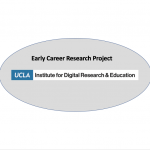
Author: Robert Fofrich Navarro, UC Postdoctoral Fellow and IDRE Fellow – Institute of the Environment and Sustainability Many climate pathways aiming to limit mean global temperatures to 2°C rely on biogenic negative emission solutions to achieve large and rapid reductions in atmospheric CO2 over the next few decades. However, land-based climate mitigation measures require significant...
Read More Ecological and Climate Mitigation Tradeoffs from Cultivating Energy Crops in Tropical Regions
Read More Ecological and Climate Mitigation Tradeoffs from Cultivating Energy Crops in Tropical Regions

Author: Seyoon Ko, Postdoctoral Scholar and IDRE Fellow, Public Health – Biostatistics This project is to develop of a method for identifying ancestry-informative markers and improving the widely-appreciated ADMIXTURE software using a modern clustering and feature ranking method for scalable admixture proportion estimation. Recently, the scale of data in the field of genetics has quickly...
Read More Unsupervised Discovery of Ancestry Informative Markers and Genetic Admixture Proportions in Biobank-Scale Data Sets
Read More Unsupervised Discovery of Ancestry Informative Markers and Genetic Admixture Proportions in Biobank-Scale Data Sets

IDRE Fellow: Dr. Olivia Sanderfoot (Postdoctoral Scholar) Faculty Mentor: Dr. Morgan Tingley (Associate Professor) Department: Ecology & Evolutionary Biology Project Description: Climate change coupled with a legacy of fire suppression is driving an increase in the frequency, intensity, and severity of wildfires1,2, prompting the United Nations to declare a worldwide “wildfire crisis3.” The record-breaking 2020 wildfire season in the...
Read More Integrating long-term ecological monitoring data and high-resolution atmospheric models to investigate avian responses to wildfire smoke
Read More Integrating long-term ecological monitoring data and high-resolution atmospheric models to investigate avian responses to wildfire smoke
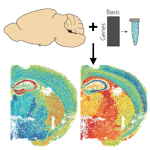
IDRE Fellow: Dr. Fangming Xie Faculty Mentor: Dr. Roy Wollman Key members of the project: Zach Hemminger, Gaby Tam, Thomas Underwood Department: Chemistry & Biochemistry Project Description: Biology is undergoing a revolution of information explosion. Thanks to decades of technological development in genomics and imaging, biologists can now routinely measure the expression level of thousands...
Read More High-throughput survey of brain cell type diversity and organization using an in-situ and in-silico hybrid neural network classifier
Read More High-throughput survey of brain cell type diversity and organization using an in-situ and in-silico hybrid neural network classifier
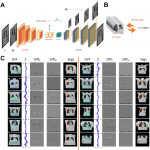
Several technological advances in radiotherapy have enabled the use of focused radiation to treat solid tumors within the thoracic cavity. Stereotactic Body Radiation Therapy (SBRT) offers a way to treat patients with high doses of radiation with just a few (three to five) treatments entirely non-invasively, providing excellent tumor control for both early stage non-small...
Read More Building a motion model for radiotherapy
Read More Building a motion model for radiotherapy
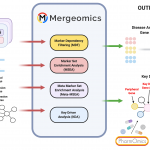
The Mergeomicsweb server allows for multi-omics data integration to derive biological pathways, networks, and key drivers important to disease pathogenesis. Multi-omics data types that can be integrated include full summary statistics of disease associations, such as from genome-, epigenome-, and transcriptome-wide association studies, and functional genomics data such as expression quantitative trait loci and gene...
Read More Mergeomics
Read More Mergeomics

The quark transversity distribution is one of three leading-twist parton distribution functions describing the structure of the nucleon. The transversity distribution is particularly difficult to measure because it is a chiral-odd distribution, manifesting as an interference effect between multiple helicity amplitudes. It appears convolved with other chiral odd distributions/fragmentation functions in the cross section of...
Read More Sub-Nuclear Structure: Extracting the Quark Transversity Distributions and Collins Fragmentation Functions
Read More Sub-Nuclear Structure: Extracting the Quark Transversity Distributions and Collins Fragmentation Functions

The properties of cementitious binders are controlled by their composition and structure at different scales. However, the complexity of their disordered, multi-scale structure makes it challenging to elucidate such linkages. In particular, due to a lack of physical models, predicting the strength development of concretes remains challenging. As an alternative route to physics-based models, machine...
Read More Prediction of Concrete’s Strength Enabled by Machine Learning Methods
Read More Prediction of Concrete’s Strength Enabled by Machine Learning Methods

Background: Computerized provider order entry (CPOE) systems have been shown to enhance the safety and efficiency of prescribing chemotherapy over the handwritten ordering process. However, many institutions lack the financial ability, technological capability, or operational flexibility to invest in and implement such a system. In particular, Olive View-UCLA Medical Center (OVMC), a Los Angeles County...
Read More ChemoPalRx: Development and implementation of a chemotherapy mobile provider order entry system in a safety net hospital
Read More ChemoPalRx: Development and implementation of a chemotherapy mobile provider order entry system in a safety net hospital
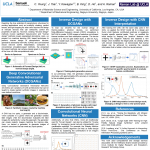
Recent studies in nanophotonic structures and metamaterials have showcased remarkable applications such as invisibility cloaks, perfect lenses, radiative cooling, and light trapping for solar cells. However, current design methodologies require computationally-intensive, time-consuming, and iterative processes to realize structurally-complex devices. For example, finite-element analysis (FEA) simulation and other “forward design” methods involve a series of trial-and-error...
Read More Machine Learning-based Inverse Design of Thermal Photonic Metasurfaces
Read More Machine Learning-based Inverse Design of Thermal Photonic Metasurfaces

One of the most fundamental pursuits in the field of space science is to understand the dynamical connections between the sun’s driving forces and the response of Earth’s space environment. Classical reasoning holds that the sun’s plasma outflow and magnetic field characteristics (known as the Solar Wind) propagate all the way to the earth and...
Read More Tracing the Flow of Information in the Coupled Sun-Earth Space System
Read More Tracing the Flow of Information in the Coupled Sun-Earth Space System

Genomic sequencing has allowed identification of omic features that predict drug sensitivity and their mechanisms of action. However, findings from these associative models have the potential to be more powerful with the availability of data from genome-wide, forward perturbation approaches in large panels of cancer cell lines. Using data generated by RNA interference (RNAi) and...
Read More Unravel Cancer Drug Specificity and Unknown Mechanism of Actions
Read More Unravel Cancer Drug Specificity and Unknown Mechanism of Actions

Wound healing is a systems-level program governed by complex inter and intracellular networks. After wounding, receptor activation causes intracellular signaling cascades inducing downstream transcriptional changes specific to the dose and identity of the ligand. Although these networks have been rigorously studied, establishing a direct mapping between signaling and gene expression is still an open question. I...
Read More Decoding NF-κB Dynamics Using A High-Throughput, Information-Based Approach
Read More Decoding NF-κB Dynamics Using A High-Throughput, Information-Based Approach

Accurately quantifying drug response is essential to designing effective anti-cancer agents. Though agents such as chemotherapies have known effects on the cell cycle, these have not been comprehensively characterized or analyzed using a unified quantitative model of pharmacologic response. Here, we used a breast cancer cell line with a stably expressed fluorescent translocation cell cycle...
Read More Mathematical modeling of cell cycle phase-specific drug response in human breast cancer cell lines
Read More Mathematical modeling of cell cycle phase-specific drug response in human breast cancer cell lines

Receptor tyrosine kinase (RTK)-targeted therapies are invariably limited by drug resistance. A major mechanism of acquired resistance involves “bypass” switching to alternative pathways driven by non-targeted RTKs that reactivate proliferation. These pathways are often centered around Erk/Akt signaling; however, a more fundamental understanding of network-level bypass resistance is required to better inform the design of...
Read More Mapping global signaling state during switched RTK activation to identify the essential features of bypass resistance in cancer
Read More Mapping global signaling state during switched RTK activation to identify the essential features of bypass resistance in cancer

A diverse amalgam of variably-structured data embodies our expanding knowledge of biological phenomena, including human health and disease. The PubMed biomedical citation database adds more than one million entries to its collection of 30 million literature items each year. These documents cover both experimental observations and clinical reports; more than two million of the latter...
Read More Resources for comprehensive information extraction and data integration in biomedicine
Read More Resources for comprehensive information extraction and data integration in biomedicine

In some modern geostatistical problems, statisticians need to analyze multiple correlated responses with the number of observations reaches a million. This big data problem has promoted a rich literature on scalable methodologies for analyzing multivariate large spatial datasets. The scalable spatial process models in the Bayesian paradigm have been found especially attractive due to their...
Read More Bayesian linear model of coregionalization (BLMC) for large scale datasets with accelerated posterior sampling algorithm
Read More Bayesian linear model of coregionalization (BLMC) for large scale datasets with accelerated posterior sampling algorithm

We introduce a biomimetic simulation framework for human perceptionand sensorimotor control. Our framework features a biomechanically simulated musculoskeletal human model actuated by numerous skeletal muscles, with two human-like eyes whose retinas contain spatially nonuniform distributions of photoreceptors. Its prototype sensorimotor system comprises a set of 20 automatically-trained deep neural networks (DNNs), half of which comprise...
Read More Learning Biomimetic Perception for Human Sensorimotor Control
Read More Learning Biomimetic Perception for Human Sensorimotor Control

Duchenne muscular dystrophy (DMD) is a lethal pediatric disease caused by mutations in the enormous DMD gene. The DMD gene contains 79 exons and spans 2 megabases – one of the largest in the human genome. Multiple messenger RNA isoforms which are “working copies” of the gene, have been described but recent data suggests an...
Read More Leveraging existing RNA-seq data sets to identify alternative isoforms of neuromuscular disease transcripts and aid the diagnosis of muscular dystrophy
Read More Leveraging existing RNA-seq data sets to identify alternative isoforms of neuromuscular disease transcripts and aid the diagnosis of muscular dystrophy

Deep learning, a branch of machine learning, can serve as a powerful toolkit for studies in ecology and evolutionary biology. In the era of big data, gaining more insight into complex patterns within a dataset can be transformative for conducting comparative analyses. The field of comparative phylogenetics has become increasingly interested in exploiting massive datasets...
Read More High-Throughput Phenoscaping Using Deep Learning for Accurate Automatic Instance Segmentation of Fish Images
Read More High-Throughput Phenoscaping Using Deep Learning for Accurate Automatic Instance Segmentation of Fish Images

BACKGROUND: A specific aspect of the hypospadias phenotype that may contribute to long-term outcomes is the presence of ventral penile curvature and the adequacy of its surgical correction. The current gold standard to assess this angle is intraoperative goniometry of an erect penis. Beyond its potential technical limitations, an angle measured by goniometry cannot be...
Read More Measurement Accuracy of 3-Dimensional Modeling Technologies versus Standard Goniometry for Assessment of Angulation
Read More Measurement Accuracy of 3-Dimensional Modeling Technologies versus Standard Goniometry for Assessment of Angulation

CART (Classification and Regression Tree) is a machine learning algorithm first proposed by Breiman et al. in 1984 and is widely used in predictive modeling. Although being a simple algorithm, CART has an important status as it sets the foundation of many tree-based methods such as Bagging, XGBoost and Random Forest. CART has long been...
Read More Classification and Regression Tree
Read More Classification and Regression Tree



